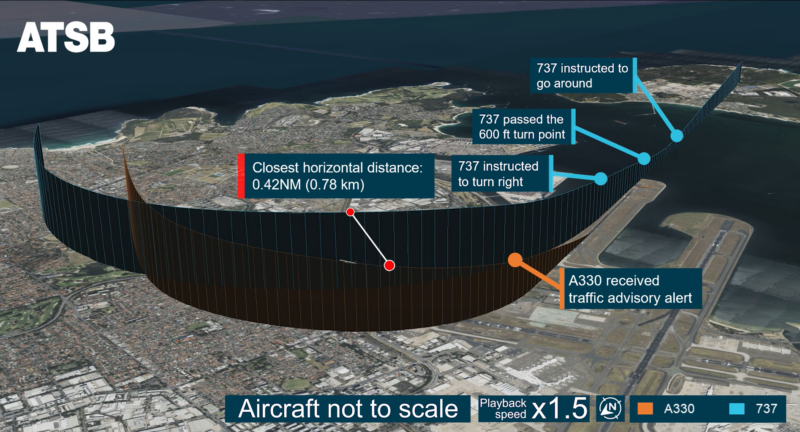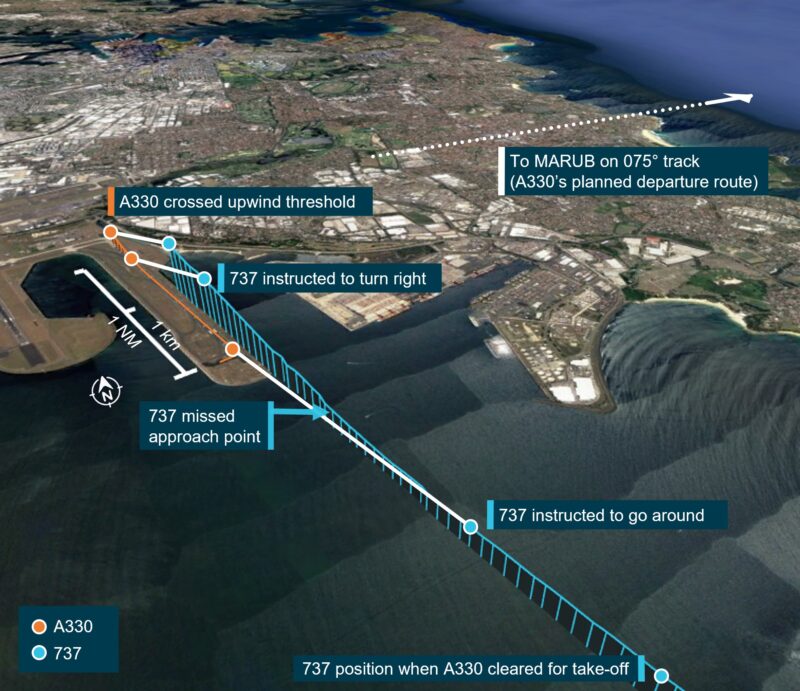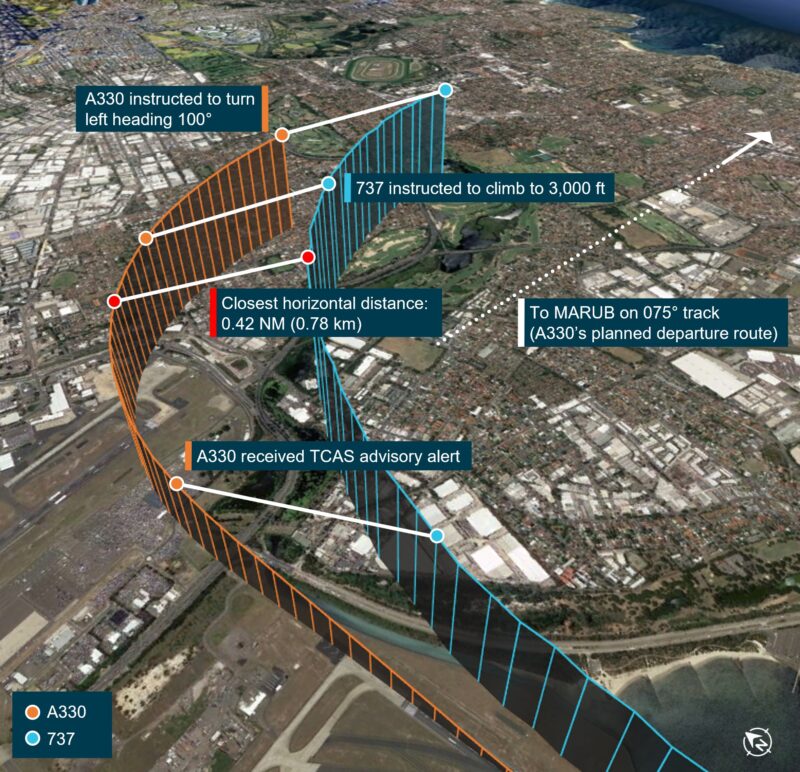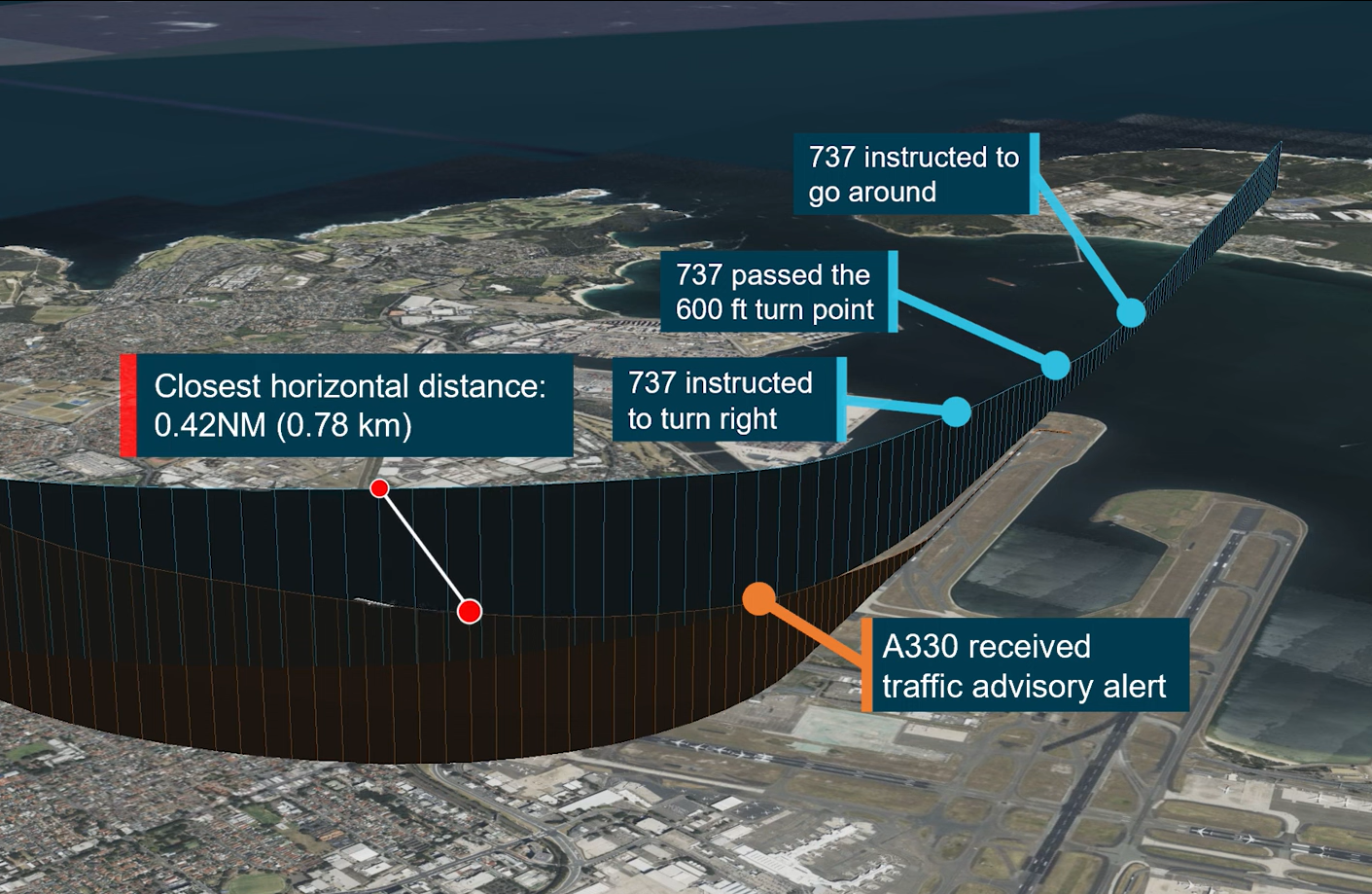A near-miss incident involving a Qantas Airbus A330 and a Boeing 737 has prompted a redesign of Sydney Airport flight paths. The two aircraft came within 500 feet of each other.
The Australian Transport Safety Bureau (ATSB) investigation found that the close proximity incident was the culmination of a series of events that, individually, would only be minor concerns, but collectively resulted in a serious incident.
The Incident
In the early evening on the 5th of August 2019, a Qantas-operated Boeing 737, carrying 181 passengers was approaching Runway 34R at Sydney Airport. Meanwhile, another Qantas aircraft, an Airbus A330 with 163 passengers on board, was awaiting clearance to line up and take off from the same runway.
After a preceding aircraft (de Havilland Canada Dash 8 operated by QantasLink) had cleared the runway, a trainee Aerodrome controller who was under the guidance of instructors in the Sydney air traffic control tower granted immediate takeoff clearance to the A330 crew. However, concerns about insufficient separation between the A330 and the approaching 737 prompted the controller to instruct the 737 crew to perform a go-around.
The 737 flight crew initiated the missed approach procedure by climbing on the runway heading, but they did not make a right turn when passing through 600 feet, as required by the procedure. Approximately 10 seconds later, the controller instructed them to make the right turn, which they promptly followed.

Meanwhile, the A330 followed the standard instrument departure track, turning right shortly after passing the departure end of the runway, causing the flight paths of the two aircraft to converge.
During their simultaneous right turns and climbs, the A330’s flight crew received a traffic alert from their onboard collision advisory system. The separation between the two aircraft reduced to about 0.42 nautical miles, about 800 meters laterally, and about 500 feet vertically.
Shortly after, the A330’s first officer sighted the 737 behind and to the right in a climbing turn.
“The aircraft came into close proximity, with separation between the aircraft reduced to about 0.42 NM (or 800 m) laterally and about 508 ft (or 150 m) vertically. Nevertheless, the controllers maintained sight of both aircraft throughout the sequence and the risk of a collision was low.”
ATSB Chief Commissioner Angus Mitchell.

What the ATSB found
The Australian Transport Safety Bureau (ATSB) investigation found that the close proximity incident was the culmination of a series of events that, individually, would only be minor concerns, but collectively resulted in a serious incident.
That series of events included:
- Reduced spacing between arriving aircraft without coordination between controllers;
- The 737’s speed during some of the final approach was higher than allowed without the flight crew advising the controller;
- The controller’s and instructor’s mental models of the developing traffic situation did not fully account for the effects of the 737’s delayed and relatively wide turn, and they expected the A330’s flight path to be further from the 737;
- No safety alert or avoiding action advice was given to either flight crew to notify them of their proximity and increase their situational awareness;
- The controller did not modify the A330’s flight path, which would have increased the distance between the aircraft;
- And, mindful that the trainee controller was (at this stage of their training) meant to be demonstrating the ability to work without intervention, the instructor did not provide effective prompts or intervene.

The ATSB investigation revealed that due to the nature of departure and missed approach procedures, which involved low-level climbs and heading to the east, controller intervention was required to maintain separation. In such instances occurring at low altitudes and during nighttime, Sydney’s controllers did not have specific procedural controls to address these situations, as reported by the ATSB.
The ATSB identified three safety concerns related to the procedures and controller training, along with an additional safety issue concerning the use of operational risk assessments for specific scenarios. In response, Air Services Australia has redesigned the missed approach procedure for Runway 34 at Sydney and integrated relevant scenarios into controller training.
Both Air Services and Qantas implemented various safety measures in response to the incident, effectively addressing all safety issues identified by the ATSB.
Sources: ATSB


